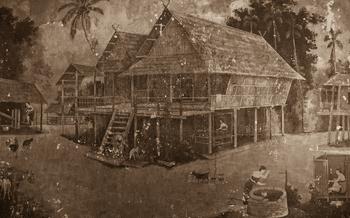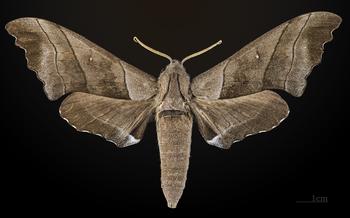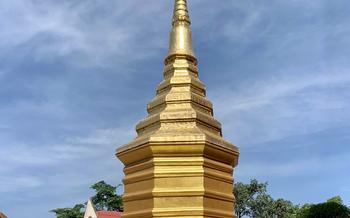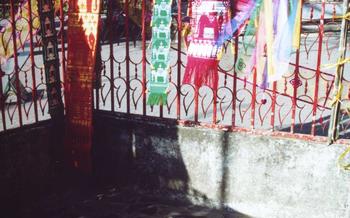
Ban Huai Sua Tao Long Neck Village
- Ban Huai Sua Tao Long Neck Village: A Cultural Immersion
- Getting There
- Accommodation
- Village Tour
- Cultural Performances
- Ethical Considerations
- Local Cuisine
- Trekking Adventures
- Elephant Sanctuary
- Natural Hot Springs
- Wat Phra That Doi Kong Mu: A Sacred Temple with Panoramic Views
- Historical Significance
- Panoramic Views
- Architectural Beauty
- Pilgrimage and Festivals
- Tham Lod Cave: An Underground Adventure
- Mae Hong Son City
- Insider Tip: Attend the Annual Long Neck Karen Festival
Ban Huai Sua Tao Long Neck Village: A Cultural Immersion
Nestled amidst the lush mountains of Mae Hong Son, Thailand, lies the intriguing Ban Hu tradition of the women wearing brass rings around their necks, creating the illusion of elongated necks. The origins of this practice are steeped in mystery, with various theories suggesting it was either a form of protection against tiger attacks or a symbol of beauty and status within the community. Regardless of its origins, the long necks have become an iconic symbol of the Padaung people and a major draw for visitors seeking a glimpse into their fascinating culture. In addition to their distinctive appearance, the Padaung people are renowned for their traditional way of life, which revolves around subsistence farming, weaving, and crafting intricate silver jewelry. Their village offers a glimpse into their daily lives, allowing visitors to witness their traditional practices, learn about their history, and gain a deeper understanding of their rich cultural heritage.
Getting There
Reaching Ban Huai Sua Tao from Chiang Mai or other cities in Thailand involves a combination of transportation options. From Chiang Mai, you can take a bus or minivan to Mae Hong Son, which takes about 6-7 hours. From Mae Hong Son, you can take a local bus or hire a songthaew (shared taxi) to the village, which takes about 1-2 hours.
The cost of transportation varies depending on the mode of transport and the distance traveled. From Chiang Mai to Mae Hong Son, the bus fare ranges from 200 to 300 baht, while a minivan costs around 400-500 baht. From Mae Hong Son to the village, a local bus costs around 50-100 baht, while a songthaew charges 200-300 baht.
To plan your trip effectively, it's advisable to book your transportation in advance, especially during peak season. You can book bus or minivan tickets online or through travel agencies. For songthaews, you can negotiate the fare directly with the driver.
Accommodation
In the rustic village of Ban Huai Sua Tao, travelers have the unique opportunity to immerse themselves in the Karen community by staying in traditional homestays or cozy guesthouses. These accommodations, often nestled amidst serene rice paddies and lush greenery, offer a glimpse into the daily lives of the villagers.
Homestays provide an intimate experience, allowing visitors to interact closely with Karen families and learn about their customs and traditions. Basic amenities, such as comfortable bedding and mosquito nets, are typically provided, ensuring a restful stay.
Guesthouses, while offering a bit more privacy, still maintain a strong connection to the village life. These establishments usually feature a range of room options, from simple fan-cooled rooms to more luxurious accommodations with air conditioning.
Booking in advance is highly recommended, especially during the peak tourist season, to secure a place to stay. However, for those seeking a more spontaneous adventure, finding accommodation upon arrival is often possible.
Regardless of the chosen option, visitors can expect a warm welcome and genuine hospitality from the villagers. The income generated from tourism plays a vital role in supporting the local economy, enabling the Karen people to preserve their unique way of life.
Village Tour
Exploring the Ban Huai Sua Tao village is an immersive experience that allows visitors to delve into the unique culture of the Karen people. Whether you choose to embark on a guided tour or explore independently, there are several highlights that you shouldn't miss.
-
Guided Tours: Opting for a guided tour provides an in-depth understanding of the village's history, traditions, and way of life. Local guides, who are often from the Karen community themselves, share their insights and personal stories, enriching the visitor experience.
-
Village Highlights: As you wander through the village, you'll encounter the lively market, where villagers sell handmade crafts, souvenirs, and local produce. The market is a hub of activity, offering a glimpse into the daily lives of the Karen people. Don't miss the opportunity to admire the intricate silver jewelry, hand-woven textiles, and bamboo handicrafts that showcase their remarkable artistry.
-
Duration and Expectations: A typical village tour lasts for about an hour, providing ample time to explore the market, interact with the villagers, and learn about their customs. Be prepared for a unique and authentic experience, where you'll witness the Karen people's strong sense of community and their deep connection to nature.
Cultural Performances
The Karen people of Ban Huai Sua Tao are renowned for their rich cultural heritage, which includes traditional dances, songs, and music. Cultural performances are a highlight of any visit to the village and a chance to witness the vibrant traditions of this unique community.
Performances typically take place in the village's main square or at a designated venue. Visitors can expect to see energetic dances that showcase the Karen's intricate costumes and graceful movements. The music is often performed using traditional instruments such as gongs, drums, and bamboo flutes.
To capture the best photos and videos, it is advisable to arrive early and secure a good spot. It is also important to be respectful and refrain from using flash photography, as this can be distracting for the performers.
Cultural performances are typically free to attend, but visitors are encouraged to make a small donation to support the local community. This contribution helps to ensure that the Karen culture continues to thrive and that visitors can continue to enjoy these unique performances.
Ethical Considerations
Visiting the Ban Huai Sua Tao Long Neck Village requires cultural sensitivity and respect for the Karen people's traditions. Here are some ethical considerations to keep in mind:
-
Respect Privacy: Remember that the villagers are welcoming you into their community, so be mindful of their privacy. Avoid taking intrusive photos or videos without their consent. Ask permission before taking any pictures, and always respect their wishes if they decline.
-
Appropriate Behavior: Dress modestly and behave respectfully. Avoid loud noises or disruptive behavior that may disturb the villagers' daily life. Remember that you are a guest in their community, so show respect and consideration.
-
Support Sustainable Tourism: Choose tour operators that prioritize ethical practices and support the well-being of the Karen people. Look for companies that give back to the community through education, healthcare, or other initiatives. By choosing responsible tourism, you can help ensure that the village benefits from your visit.
-
Cultural Exchange: Engage in meaningful conversations with the villagers to learn about their culture and traditions. Ask questions respectfully and listen attentively to their stories. This exchange can help bridge cultural gaps and foster mutual understanding.
Local Cuisine
Immerse yourself in the culinary delights of Mae Hong Son's Long Neck Village, where traditional Karen cuisine awaits your taste buds. Savor the flavors of bamboo soup, a local specialty made with fresh bamboo shoots, fragrant herbs, and tender chicken or pork. Pair it with sticky rice, a staple in Thai cuisine, for a complete and satisfying meal.
For vegetarians and vegans, there are plenty of options to satisfy your cravings. Try the stir-fried vegetables, bursting with vibrant colors and flavors, or the tofu curry, a hearty and comforting dish that will leave you wanting more.
To find the best local restaurants, venture beyond the main tourist areas and ask the villagers for recommendations. They will gladly direct you to hidden gems where you can indulge in authentic Karen cuisine, prepared with love and fresh ingredients.
Trekking Adventures
For those seeking an active and immersive experience, the surrounding mountains offer a variety of trekking trails. Embark on a guided trek with local guides who will lead you through the lush forests, revealing hidden waterfalls, panoramic viewpoints, and encounters with the diverse flora and fauna of the region.
Before embarking on your trek, ensure you pack appropriate clothing and footwear, considering the terrain and weather conditions. A sturdy pair of hiking boots or shoes with good traction is essential, along with layers of clothing to accommodate changing temperatures.
Choose from various trekking routes, ranging from easy walks to challenging multi-day adventures. Immerse yourself in the natural beauty of the region, passing through dense bamboo forests, cascading waterfalls, and traditional Karen villages.
Along the way, your local guide will share insights into the local culture, history, and the unique ecosystem of the area. They will point out medicinal plants, edible fruits, and wildlife that you might encounter during your trek.
Whether you opt for a short hike or a multi-day adventure, trekking in the mountains surrounding Ban Huai Sua Tao is an unforgettable experience that allows you to connect with nature and gain a deeper appreciation for the Karen people and their way of life.
Elephant Sanctuary
A short drive from Ban Huai Sua Tao, you can find several ethical elephant sanctuaries that offer a chance to interact with these gentle giants in a responsible way. These sanctuaries prioritize the well-being of the elephants, allowing them to roam freely in natural surroundings and providing them with proper care and nutrition.
At the sanctuaries, you can participate in various activities that promote ethical interaction with elephants. You can observe them in their natural habitat, learn about their behavior and biology from experienced guides, and even participate in feeding and bathing sessions. Some sanctuaries also offer overnight stays, allowing you to immerse yourself fully in the elephant experience.
When choosing an elephant sanctuary, it's important to do your research and ensure that the sanctuary follows ethical practices. Look for sanctuaries that are accredited by reputable organizations such as the Thai Elephant Tourism Association (TETA) or the Global Federation of Animal Sanctuaries (GFAS). These accreditations indicate that the sanctuary meets high standards of animal welfare and sustainability.
By visiting an ethical elephant sanctuary, you not only get to experience the magic of these majestic creatures up close but also contribute to their conservation and well-being. It's a unique opportunity to learn about the importance of protecting elephants and supporting responsible tourism practices.
Natural Hot Springs
Nestled amidst the lush greenery of Mae Hong Son, a soothing escape awaits at the natural hot springs. Immerse yourself in the warm, mineral-rich waters and let your worries melt away. These hot springs are renowned for their therapeutic benefits, offering relief from muscle aches, joint pain, and stress.
As you sink into the steaming pools, feel the tension dissipate and your body relax. The natural minerals in the water work wonders on your skin, leaving it feeling soft and rejuvenated. Take advantage of this opportunity to unwind and replenish your energy in the embrace of nature.
Finding the best hot spring spots is part of the adventure. Explore the surrounding area, ask locals for recommendations, and discover hidden gems tucked away in the hills. Whether you prefer a secluded hot spring amidst tranquil surroundings or a more developed hot spring with facilities like changing rooms and showers, there's something for every traveler.
Soothe your mind, body, and soul at the natural hot springs of Mae Hong Son. Indulge in the healing properties of the mineral-rich waters and emerge feeling refreshed and revitalized. Let the serenity of nature wash over you as you rejuvenate in this tranquil haven.
Wat Phra That Doi Kong Mu: A Sacred Temple with Panoramic Views
Perched atop a hill overlooking the stunning Mae Hong Son Valley, Wat Phra That Doi Kong Mu is a revered temple that attracts both pilgrims and tourists alike. Its sacred aura and historical significance make it a must-visit destination for anyone exploring the region.
Historical Significance
The temple's origins can be traced back to the 13th century, during the reign of King Mangrai, the founder of the Lanna Kingdom. Legend has it that the king was on a hunting expedition when he stumbled upon a sacred relic, believed to be a Buddha's footprint, enshrined on the hilltop. He immediately ordered the construction of a temple to house the holy artifact, giving rise to Wat Phra That Doi Kong Mu.
Panoramic Views
The temple's elevated location offers breathtaking panoramic views of the surrounding landscape. Visitors can marvel at the lush green valleys, rolling hills, and distant mountain ranges that stretch as far as the eye can see. The best time to visit is during sunrise or sunset, when the sky is painted with vibrant hues, casting a magical glow over the entire region.
Architectural Beauty
The temple itself is a testament to the exquisite craftsmanship of the Lanna era. Its gleaming white stupas, adorned with intricate carvings and colorful mosaics, stand tall against the backdrop of the azure sky. The main ordination hall, known as the viharn, features stunning murals depicting scenes from the life of Buddha and the history of the temple.
Pilgrimage and Festivals
Wat Phra That Doi Kong Mu holds a special place in the hearts of Thai Buddhists, who make pilgrimages to the temple throughout the year to pay homage to the sacred relic. The temple also plays a central role in several local festivals, including the annual Loi Krathong and Songkran celebrations, when the temple grounds come alive with vibrant processions, music, and traditional dances.
Tham Lod Cave: An Underground Adventure
Tham Lod Cave is a must-visit destination for nature enthusiasts and adventure seekers in Mae Hong Son. This impressive cave system stretches for several kilometers and boasts stunning stalactites and stalagmites formations that have been shaped over millions of years by the erosive power of water.
To explore the cave, you can take a guided boat tour that will take you through the underground river that flows through the cave. The boat ride is a thrilling experience, as you'll navigate through narrow passages and marvel at the towering rock formations that surround you.
Along the way, your guide will point out the various stalactites and stalagmites, which come in all shapes and sizes. Some of them resemble animals, while others look like mythical creatures. The cave is also home to a variety of bats and insects, which add to the eerie atmosphere.
The boat tour takes about an hour, and it's a great way to cool off on a hot day. After the tour, you can relax on the banks of the river and enjoy the tranquil surroundings.
Tips for Visiting Tham Lod Cave:
- Wear comfortable shoes and clothing, as you'll be doing some walking and climbing.
- Bring a flashlight or headlamp, as some parts of the cave can be dark.
- Be prepared to get wet, as the boat ride can be quite bumpy.
- Don't forget your camera, as there are plenty of photo opportunities inside the cave.
Mae Hong Son City
While in the area, don't miss the opportunity to explore the charming city of Mae Hong Son. Located just a short drive from Ban Huai Sua Tao, Mae Hong Son offers a glimpse into the region's rich history and culture.
Stroll through the bustling local markets, where you can find everything from fresh produce to handmade crafts. Visit the city's many temples, each with its unique architectural style and religious significance. And be sure to sample the delicious street food, from grilled meats to noodle soups, that Mae Hong Son is famous for.
For a truly immersive experience, plan your visit to coincide with the annual Long Neck Karen Festival, held in February. This vibrant celebration showcases the unique culture and traditions of the Karen people, with colorful parades, traditional dances, and music performances. It's a fantastic opportunity to learn more about this fascinating ethnic group and capture some amazing photos.
Insider Tip: Attend the Annual Long Neck Karen Festival
Don't miss the opportunity to immerse yourself in the vibrant culture of the Karen people by attending the annual Long Neck Karen Festival, held in February each year. This festival showcases the unique traditions and customs of the Karen community, including captivating cultural performances, traditional music, and colorful parades.
Experience the electrifying atmosphere as the Karen people come together to celebrate their heritage. Witness mesmerizing traditional dances, listen to the soulful melodies of their music, and capture stunning photographs of the vibrant costumes and elaborate headdresses.
The festival is a fantastic opportunity to learn more about the Karen culture, interact with the friendly locals, and support sustainable tourism practices. Take advantage of the photo opportunities to document your unforgettable experience.
Plan your trip to coincide with the festival to make the most of this unique cultural immersion. Immerse yourself in the captivating sights, sounds, and flavors of the Long Neck Karen Festival, and leave with cherished memories that will last a lifetime.




